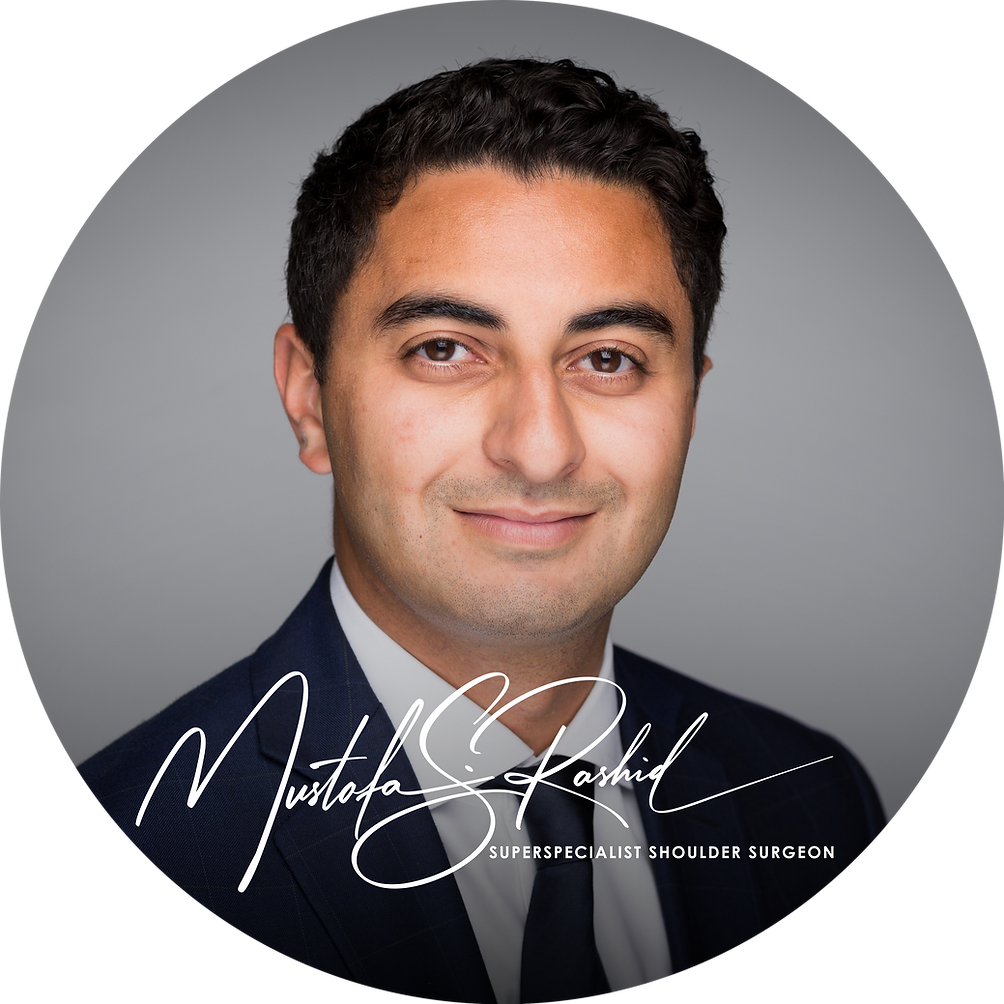Shoulder Dislocation

Anatomy and Function
The shoulder joint is a ball and socket joint. In order to allow us to move our shoulders through a wide range of motion, the ball is large and the socket is small and flat. Whilst this gives the joint more mobility, it also means it is prone to dislocation, where the ball comes out of the socket. This is often due to a traumatic event, often during sports. The shoulder maintains its’ stability through a complex interplay of muscles, ligaments, cartilage and nerves. The socket has a ring of cartilage, called the labrum, which is needed to provide the brain with information about where the centre of the socket is. In shoulder dislocations, the labrum is often torn from the socket.
Causes and Risk Factors
Most people who dislocate their shoulder are young and active. In this population, a significant fall or a sporting injury often causes the first dislocation. Male patients are at higher risk of dislocating their shoulder. The other risk factors include how flexible your joints are, what sports you play, and your age. The younger you are when you dislocate your shoulder for the first time, the greater the chance of another dislocation. A male aged 27 years old who dislocates their shoulder for the first time, will have a 50% risk of another instability event within 2 years. The lifetime risk is often greater.
First time dislocation
Most people will know when they have dislocated their shoulder. It is incredibly painful and the shoulder looks very different to normal. During a first time dislocation, getting to an appropriately trained medical professional quickly, to put the shoulder back into its socket, often with sedation, is crucial. Once the shoulder is put back in, an Xray is used to confirm that it is now in the right position. A sling may be provided for comfort only.
Diagnosis
Most patients should see a shoulder specialist after their first dislocation. It is important to examine what structures are damaged. In young patients (<40 years old), the commonest injury is detachment of the labrum. Associated with this, there are often other structures injured. Most commonly, the back of the ball of the shoulder joint is indented. This is called a Hill Sachs lesion. In patients over 40 years old, they may also tear their rotator cuff tendons, which often will require surgery to repair them. In patient over 70 years old, there may also be a fracture of the ball or socket of the shoulder joint. A MRI, or CT scan is often needed to confirm what is damaged.
Non-Surgical Treatment Options
Physiotherapy is very important in all treatments for shoulder instability. Most first time dislocation patients will eventually return to normal function in their shoulders without surgery. Physiotherapy can help restore motion, function, strength and stability. It often involved rehabilitating not only the after shoulder, but also the shoulder blade muscles, core stability, and even addressing lower body imbalances.
Surgical Treatment Options
Surgery is often proposed to either stabilise the shoulder, or more commonly, to reduce the risk of future dislocations. More damage is accumulated after every dislocation event so it is often better to address the problem sooner, rather than later. Dr. Rashid believes in offering patients the option, explaining the risks and benefits of surgery, and allowing his patients to be empowered to make the best decision for their health. Surgery to repair the labrum and address the Hill Sachs defect is keyhole (arthroscopic), day case (in and out of hospital the same day), and comes with a 95% chance of success.
Self-Management and Lifestyle Tips
It is not advisable to necessarily give up your chosen sport or activity, but rather discuss ways to adapt how you use your shoulders to prevent further injury. Dr. Rashid will work with you and your physiotherapist to put in place a strategy for strengthening your shoulder and methods to prevent reinjury.
About the Author

Mustafa Rashid
Dr. Mustafa Rashid is an award-winning, well published superspecialised surgeon from the UK, specialising in shoulders
